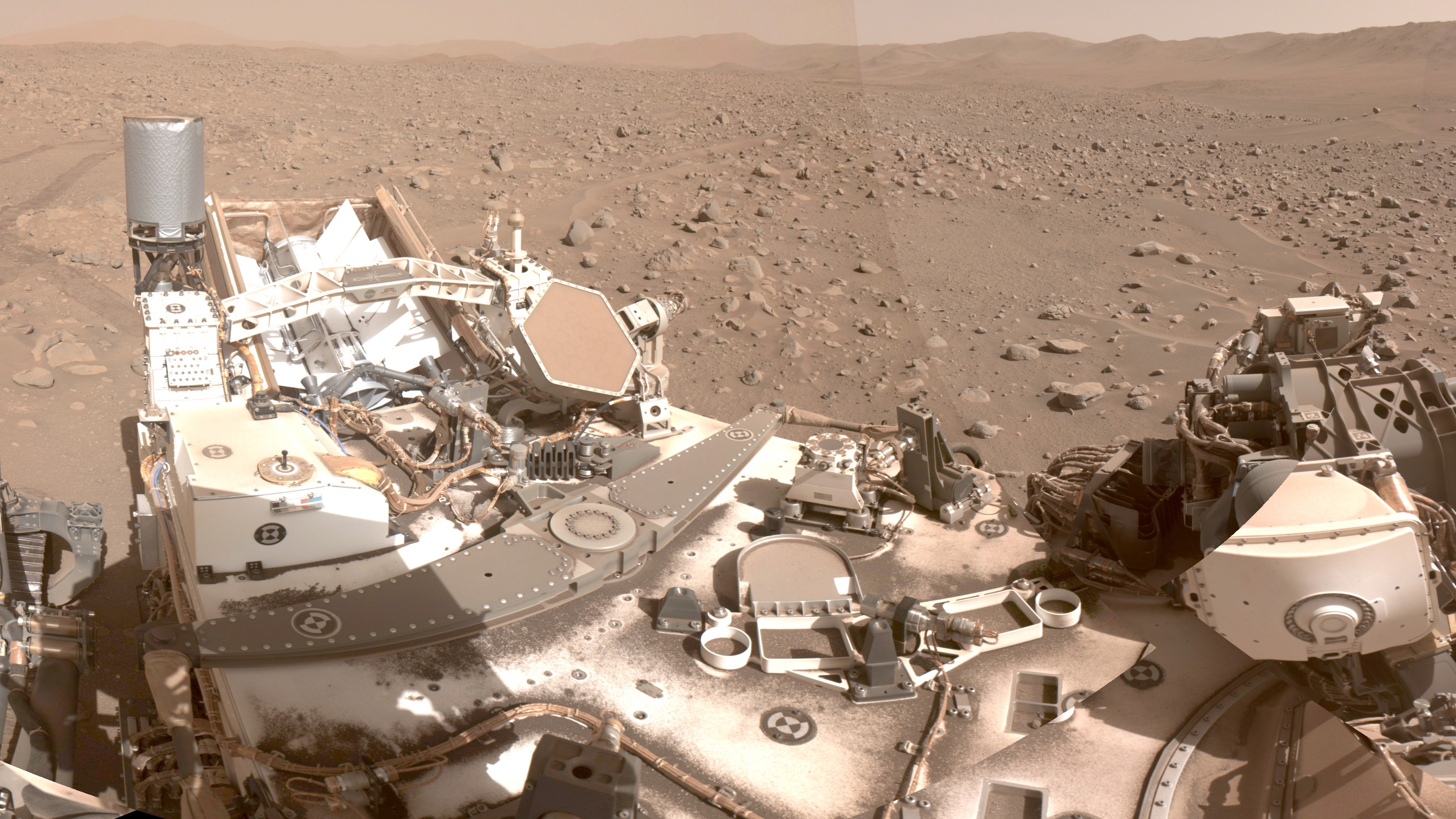NASA's Perseverance rover sets record for longest Mars drive on autopilot
The rover's autopilot even guided it through boulders not seen by orbiting spacecraft.

NASA's Perseverance rover, along with its automatic navigation system, just set a record on Mars by maneuvering right through a particularly hazardous patch of Martian land. In turn, this impressive trip saved scientists weeks of precious time during which they can now do more science.
Although the mission team usually charts out the Mars rover's course manually, the automatic navigation system named AutoNav proved remarkable in this case as it safely guided the Perseverance rover around rocks hidden from orbiter images typically used for planning, scientists say.
"It was much denser than anything Perseverance has encountered before — just absolutely littered with these big rocks," Del Sesto, the deputy rover planner lead for Perseverance at the Jet Propulsion Laboratory in California, said in a statement published Thursday (Sept. 21). "We didn't want to go around it because it would have taken us weeks. More time driving means less time for science, so we just dove right in."
In late June, Perseverance entered the boulder field named "Snowdrift Peak" from the east. It first paused to inspect two rocks, then, guided by AutoNav, trudged right through the field. By the time the rover exited Snowdrift Peak in late July, it had logged 759 meters (0.8 kilometers), according to the statement.
The rover's covered distance is slightly longer than the 520 meters (0.5 kilometers) it would have covered if it were to travel in a straight line, which scientists attribute to AutoNav's help in guiding Perseverance around rocks not visible to the mission team.
NASA's robotic explorers have remained protected on unfamiliar terrains by automatic navigators since 1997 when Sojourner, the space agency's first Mars rover, dodged dangerous rocks using a silicon-based navigator. But it had such a small memory that the rover needed to stop every 5.1 inches (13 centimeters) to reorient to its surroundings. With better software, those distances increased with every successor that visited Mars.
Now, Perseverance doesn't need to stop to decide where to go next at all, thanks to powerful cameras and a dedicated computer for image processing, which together help AutoNav plan the route in real-time.
Breaking space news, the latest updates on rocket launches, skywatching events and more!
"Our rover is the perfect example of the old adage 'two brains are better than one,'" Vandi Verma, the mission's chief engineer for robotic operations at JPL, said in the statement. "Perseverance is the first rover that has two computer brains working together, allowing it to make decisions on the fly."
Those programmed brains have also helped Perseverance set previous records on Mars for off-roading 699.9 meters (0.6 kilometers) in the Jezero Crater — the longest drive without human review, scientists say.
Earlier this month, Perseverance kickstarted its fourth science campaign by exploring the inner regions of Jezero Crater's western rim, which seems to be rich in carbonates — a tantalizing clue that could shed more light on any ancient microbial life that might have existed on Mars. This area is also rich in broken rocks, high slopes and Martian dunes, according to data gathered from orbiting spacecraft.
"This new terrain is definitely going to throw a few curveballs at us and AutoNav," said Mark Maimone, deputy team chief for robotic operations on Perseverance. "But that is where the science is.
"We're ready."

Sharmila Kuthunur is an independent space journalist based in Bengaluru, India. Her work has also appeared in Scientific American, Science, Astronomy and Live Science, among other publications. She holds a master's degree in journalism from Northeastern University in Boston.
